Wildlife at Reserva Don Luis
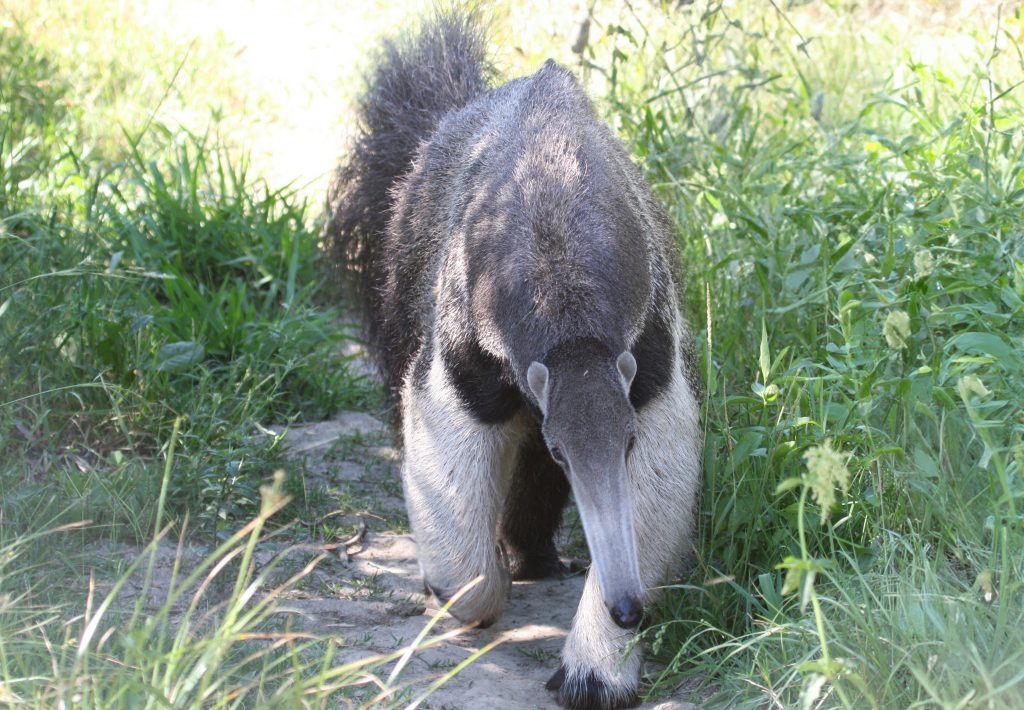
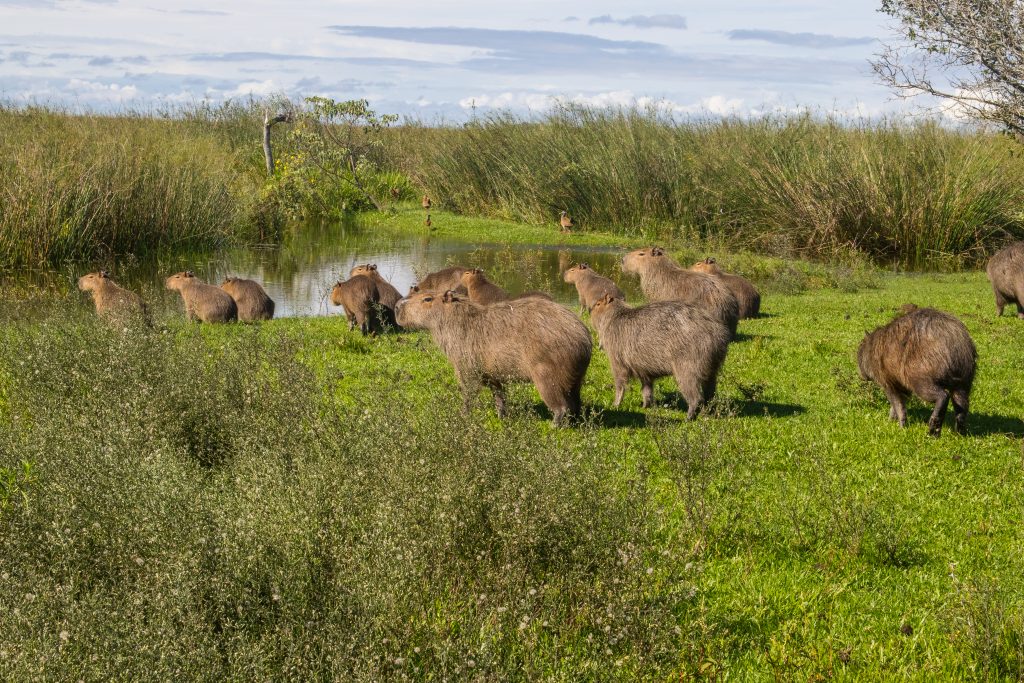
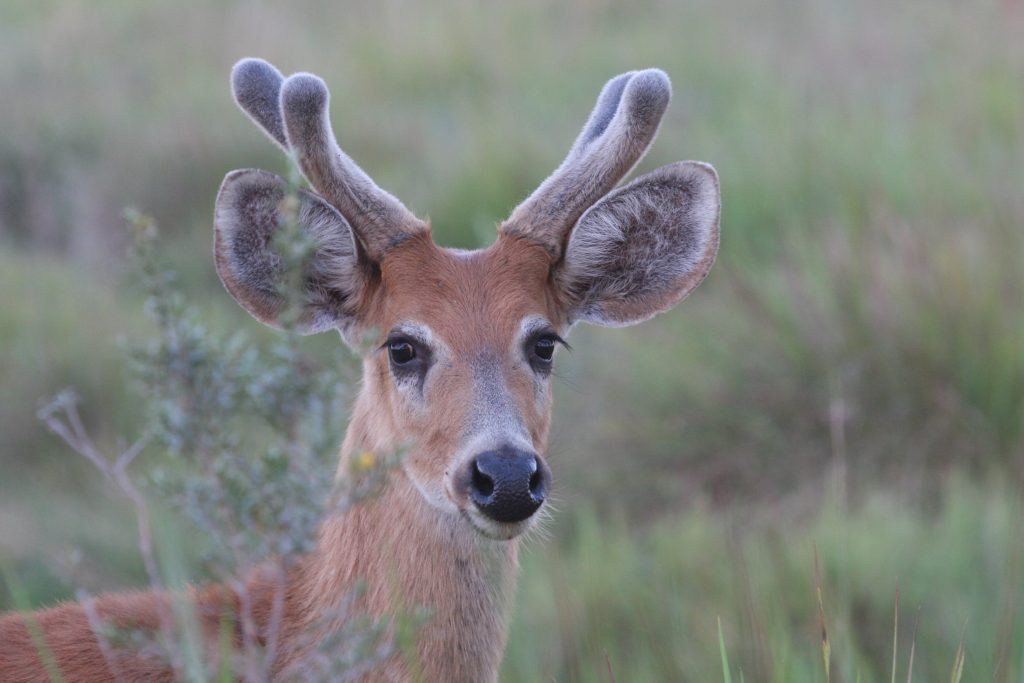
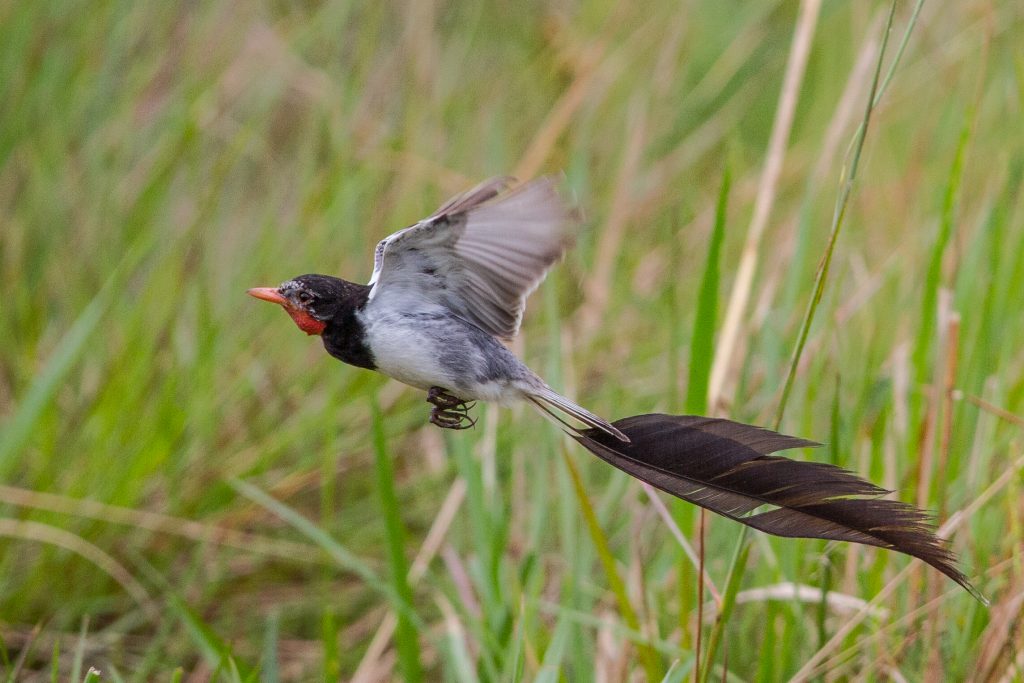
Giant Anteater
Capybara
Marsh Deer
Strange-tailed Tyrant
‘In May 2025 we received our first Giant Anteater from Rewilding Argentina. Our reserve was considered a suitable and safe location for release of this ‘Vulnerable’ species, and we are delighted to welcome ‘Tupac’, a male 45kg juvenile Anteater. He is currently in a large fenced area but will be soft released within a few weeks.
They are the largest of the anteaters and the only species in the genus ‘mymecophaga’. They have no teeth and a very low metabolism and body temperature. They have an excellent sense of smell, poor eyesight and hearing is debateable.
They are solitary and only come together with another anteater to mate. Their size is comparable to a Labrador dog with a tail almost as long as the body length which they use to cover their bodies whilst sleeping, presumably to keep warm.
They use their long narrow tongue (length up to 60cm) to probe anthills and termite hills and devour the insects.
Whilst not in the least Endangered, the Capybara, the largest living rodent, is an iconic part of the Ibera Marshes and we have hundreds at our reserve.
They can measure more than 1m in length and weigh up to 50kg and have webbed feet with distintive foot-prints. They have large families and the females can breed twice per year producing up to seven or eight young per litter. They are social animals and are usually seen in family groups, sometimes consisting of 20 or more. They spend a lot of time submerged in the water and can be quite well camouflaged as their eyes, ears and nose are all close to the top of the head.
They are good swimmers whose diet consists of grasses, aquatic plants and roots. When startled they make a loud dog-like bark and will usually retreat to nearby water although not at any great speed. They are known as Carpincho in Argentina.
Birds commonly perch on them to peck off insects which is also beneficial to the Capybara.
We are very fortunate to have so many Marsh Deer (Blastocerus dichotomus) at our reserve. It is classed as Vulnerable in the IUCN redlist and is known as Ciervo de los Pantanos in Argentina.
This is the largest of the South American deer and can reach a height of up to 1.2m, and a weight of between 100-150kg. Colouration is rufous in the spring/summer but it becomes browner during the winter. They are characterised by their black lower legs. Males can develop antlers up to 60cm in length with up to 8 points.
They love to graze in shallow water and marshland and their hooves are specially adapted to this type of habitat. They eat leaves, aquatic plants and roots and are good swimmers.
Generally the female bears one offspring per year which can be at any time of year.
The range of the Marsh Deer is generally confined to Paraguay, the SW of Brazil and the NE of Argentina although there are still small pockets of these animals in the wetlands of Bolivia and Peru.
The Strange-Tailed Tyrant lives up to its name as it has a tail twice the length of its body and is quite unusual looking. The male has a featherless throat which turns bright red during the breeding season. Sexual dimorphism is apparent with the female coloured in shades of brown and less striking. She also has a long tail but it is a lot less cumbersome. this species is considered Vulnerable in the IUCN realist.
The Strange tailed Tyrant has a small range and appears to be resident in small pockets. The range is from Southern Paraguay to NE Argentina with the largest population being in the Esteros del Ibera where it can be locally common. There are also a few pockets left in Brazil and Uruguay.
We are delighted that we now have a reasonable sized population of these birds at Reserva Don Luis, and whilst it can be transient, they are breeding here very successfully. Our conditions here are perfect for this species and we manage our land to accommodate them.
Ibera Seedeater
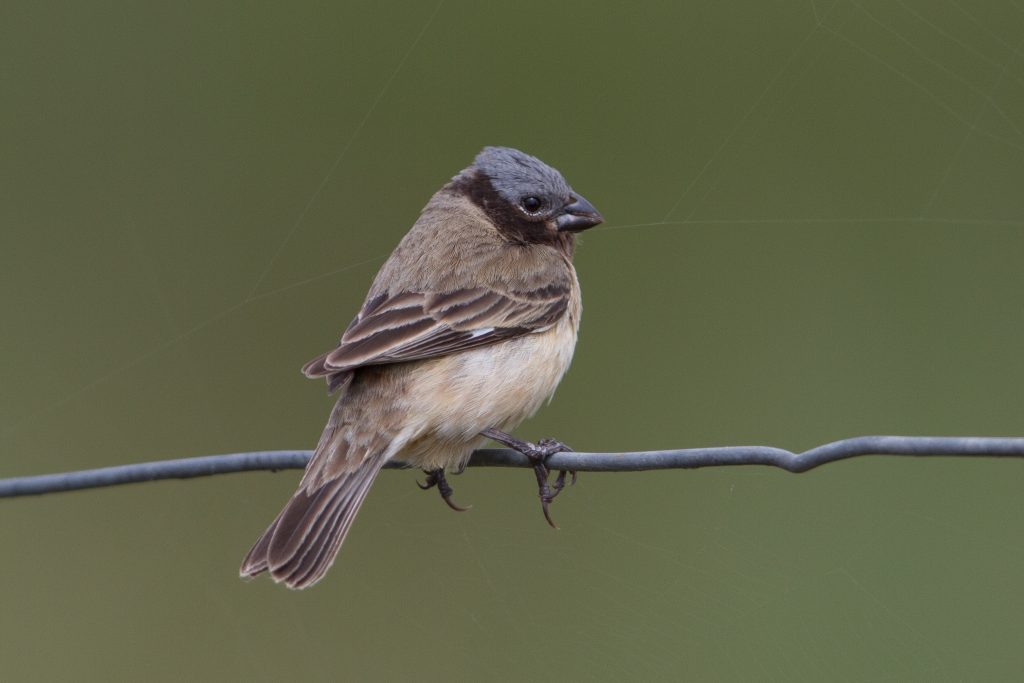
Sporophila iberaense
We are delighted to announce that we have been awarded a grant from Mohamed bin Zayed Conservation awards. This is to help protect this endangered species from cattle invasions, provide a bird ringing program and observe the nests using sensitive camera traps. We are well underway with the project and have ringed several examples of the species. Shortly we will be able to observe the nests and will place sensitive camera traps to monitor the behaviour. The funds will also help to secure our fences and allow for autumn prescriptive burning to reduce the prospect of widfires.
Jabiru
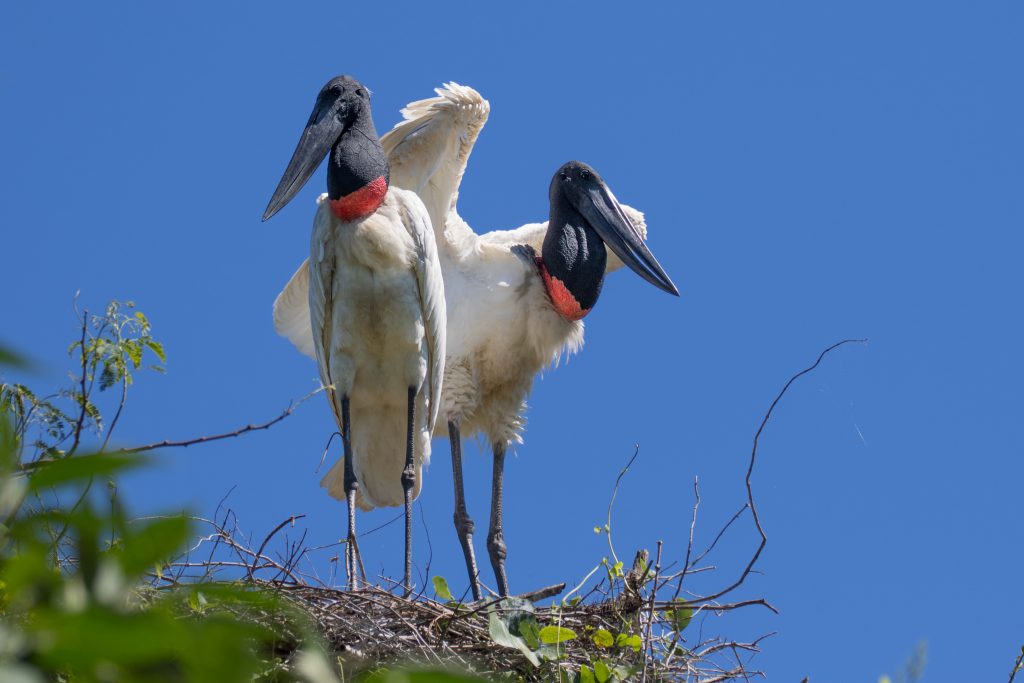
Jabiru mycteria
The Jabiru (or Yabiru in Argentina) is the tallest flying bird in the Americas and males can stand as high as 1.5m. Their range in South America extends from Mexico to Argentina and although locally common in a few places they are in decline. They are found in wetlands such as the Esteros del Ibera, Pantanal and favour freshwater marshland and shallow water in which to hunt. They feed on a wide range of prey such as reptiles, amphibians, fish, large insects and sometimes small mammals. They are a Stork from the family Ciconiidae and build huge nests in the tallest trees they can find. In our area of Ibera the trees are not very tall so the nests are quite visible. They normally lay 2 to 5 eggs which both adults brood. The young fledge at around 110 days and stay with their parents for another 3 months.
Maned Wolf
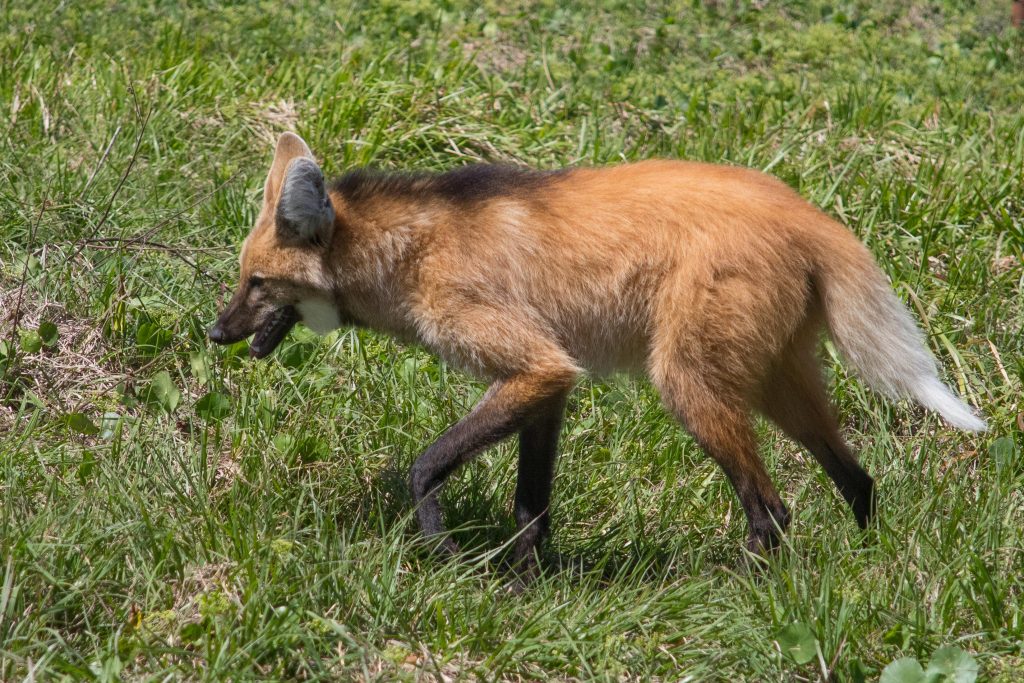
Chrysocyon brachyurus
The Maned Wolf is a solitary animal with a large range and is found only in northern parts of South America, such as Brazil, Eastern Bolivia and Northern Argentina. We have seen this species at our reserve on several occasions but it seems to prefer dry conditions so when we are in wetland status they are not usually seen. It is the largest canid of South America and is the only species in the genus ‘Chrysocyon’. It can occasionally be heard, or less often sighted, in the Esteros del Iberá. It is listed as Near Threatened in the IUCN redlist although Brazil lists it as Vulnerable. It is nocturnal, has no natural predators (other than possibly the Jaguar) and preys on small mammals. It’s omnivorous diet includes fruit as a major part, usually in the form of Solanum lycocarpum. In Argentina it is known as Aguará guazú.
Red & Green Macaw
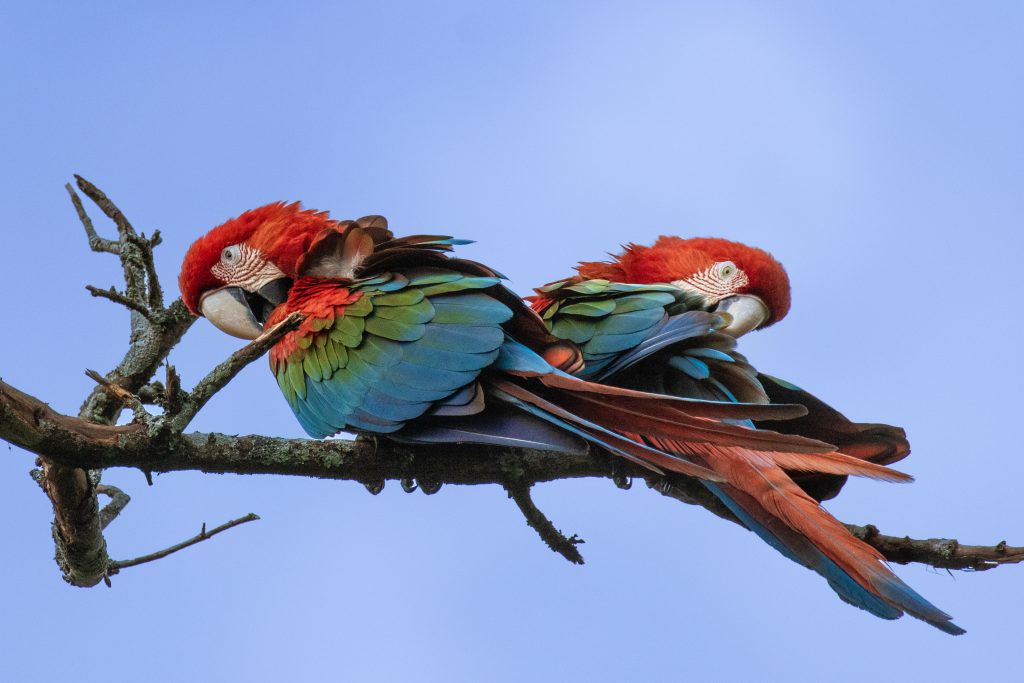
Ara chloropterus
These brightly coloured Macaws have been reintroduced to the Ibera marshes and there are now around a dozen flying free. The project was created by Re-wilding Argentina, and is now operated from our own reserve.We are privileged to see these birds in our garden and woodlands regularly. They are very brightly coloured and make a tremendous noise. Predominantly fruit eaters, these birds seem to enjoy the seeds of the Timbo tree. They are large birds with good flying ability and appear very acrobatic when feeding on the trees.
Explore Our Unique Ecosystem
At Reserva Don Luis, we protect a vibrant array of wildlife and ecosystems. Our varied habitats support numerous species, from lively capybaras to the rare marsh deer.
